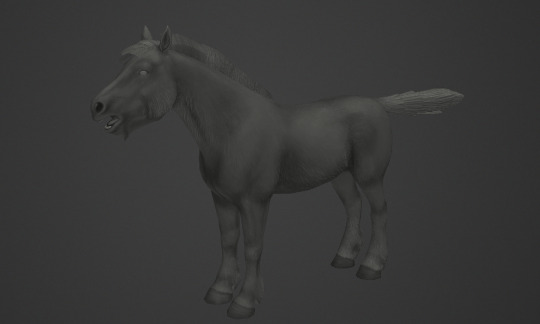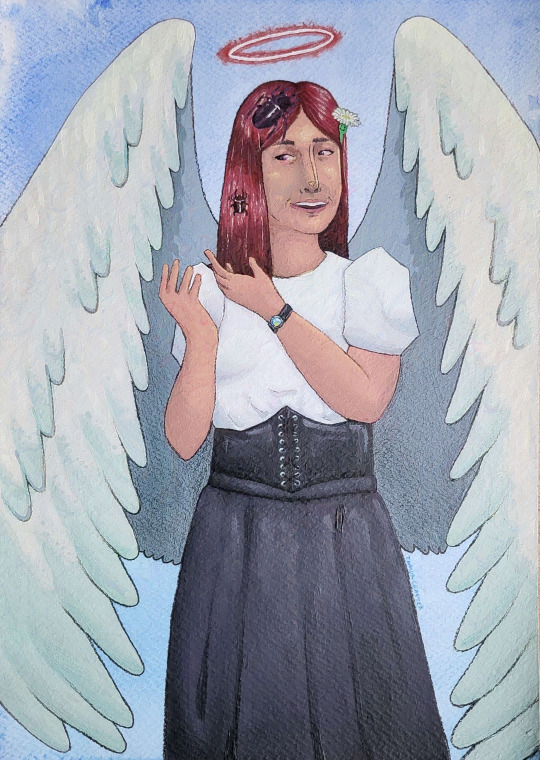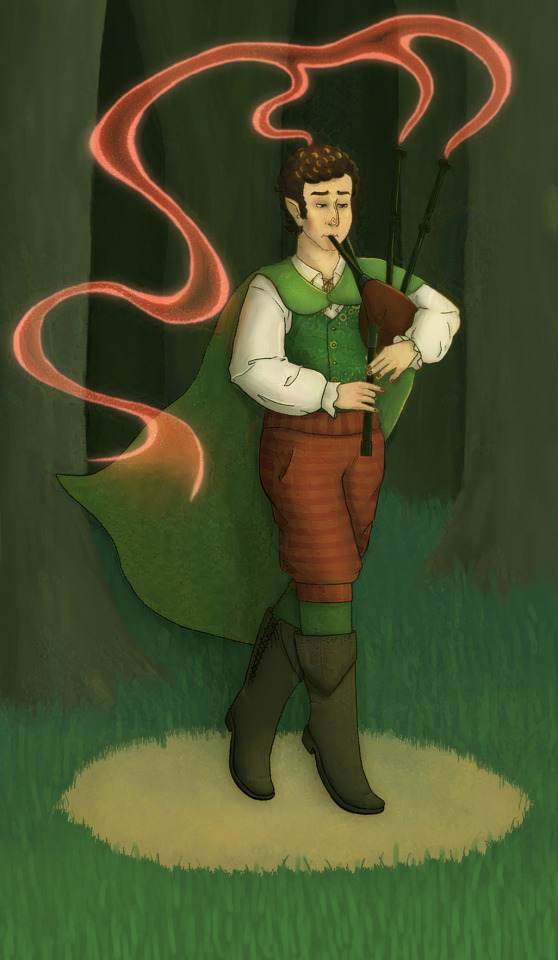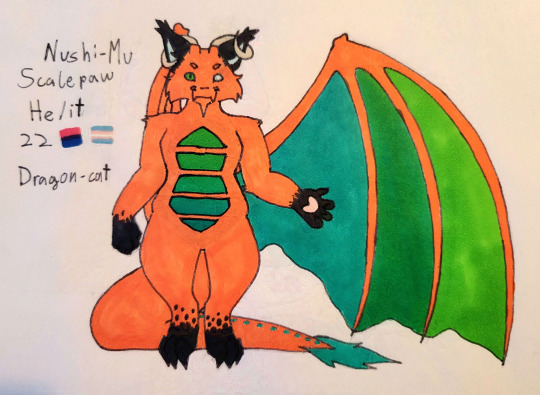#scandinavian references
Explore tagged Tumblr posts
Text




The diagram for the classic Origami Goat, with a twist to make its horns curve ! It's from this video by by Origami Word, but it seems to be a pretty old/intemporal design that a lot of people have made. I could not find a diagram online so I made one.
(If you make her in yellow/orangy-yellow, then decorate her with red ribbons, you can make your own origami gävlebocken ! )

#She'll be about a third of the size of the original paper#origami diagram#gävlebocken#origami goat#origami#gavlebocken#fun fact that not a lot of people might know : gälvebocken only refers to the goat of the city of Gälve !#however lil goats made of straws are a classic -around christmas- ornament/decoration - especially in northern europe/scandinavian countries#and they're called julbocken !#so yeah technically your little goat can be decorated as a julbocken *like* the gävlebocken is ^^#(but i put that into the gävlebocken tag because i felt like people might want to know they can make a flammable origami of the gävlebocken)
17K notes
·
View notes
Text
"The trumpet trombone shall sound", from Händel's Messiah
[source] performed by Créatine Price (voice, insta @/creatineprice), Tilda Watersclear (trombone, insta @/tildawatersclear) and Felix Jarrar (piano, insta @/the_original_fefe) during the lead-up to Drag Messiah in September 2024
the original text is of course "the trumpet shall sound", from 1st Corinthians 15: 52-53, and is scored for trumpet. in this performance they light-heartedly switch it up for trombone.. but interestingly, German Bible translations do actually render that passage as "the trombone shall sound" ! for example, Martin Luther's 1545 translation with which Händel himself would undoubtedly have been familiar reads : "Denn es wird die Posaune schallen"
#handel#the messiah#music#trombone#most bible translations seem to go with trumpet or bugle which is normal. Dutch uses bazuin which is specifically a medieval herald trumpet#besides German I think the Scandinavian langauges also go for trombone for some reason#the Afrikaans PWL translation of 2016 bizzarely renders it as ram's horn or shofar. the original text is of course Greek#and refers to the ancient Mediterranean instrument the salpinx. which is a metal trumpet like instrument and certainly not a ram's horn#the normal Afrikaans translations go with trumpet or basuin like the Dutch
6 notes
·
View notes
Text
Imagine a travel episode where it's the Scandinavian Trio travelling through Italy or Spain but they're all just collectively ganging up on Sweden (who this trip is for) and messing with him, and both Denmark and Norway are basically just Conan O'Brien with Jordan on their trip to Italy I think that would be so funny 💀







#hetalia#soap is talking#hws sweden#hws denmark#hws norway#scandinavian trio#headcanons#headcanon#aph sweden#aph denmark#aph norway#I love Conan this trip just screams “brothers mocking Sweden” to me 😂😂😂#it's like they specifically booked this trip for Swe because he loved visiting so they think they've earned additional rights to tease him#I love Conan the golden god of Finland#<- an old Conan O'Brien reference 👀👀#hetalia sweden#hetalia denmark#hetalia norway#seriously guys look up “Conan and Jordan Italy trip” on youtube y'all will not be disappointed!!#there's a lot more I can edit in but it was 2 AM when I made this so I'm lazy n sleepy now sleep tight xoxo
21 notes
·
View notes
Text

Reference Sheet - Sven Haraldsson
This is a character of mine named Sven Haraldsson, an Icelandic Norse Viking from the 10th century AD. After one of Iceland's volcanic eruptions devastates his village, Sven goes on a raiding expedition to the region of Senegambia in West Africa, hoping to obtain some gold to help rebuild his family's fortune. Warriors from one of the local Serer villages ambush Sven's party and take him captive, but he offers to help them out on some mission in exchange for his freedom (and some of their gold), with their wise and beautiful saltigue (priestess) Mossane tagging along and becoming his love interest. I've still yet to decide on what that mission is, but hopefully it will be packed with action and adventure!
#original character#character design#reference sheet#viking#norse#scandinavian#european#digital art#art
2 notes
·
View notes
Text
kinda delighted to see fairly obscure norwegian medieval folklore (pesta) showing up in the witcher 3.
kinda weirded out there's a character whose name is just the norwegian word for limestone (kalkstein).
#i'm assuming there's some overlap between scandinavian and eastern european folklore#but pesta is very specifically 14th century norway. love me some pesta#also i laughed at a reference to a Stygga castle even though that one was definitely unintentional#'stygga' is how you'd address someone (female) as 'ugly' to their face#slett's play
3 notes
·
View notes
Text

first thing I'm doing with my new power is adding Mongolian/Altai inspired horses to Solstheim
#at least one will have the leopard complex#since it doesn't appear in any of the scandinavian breeds I reference for nordic horses#but it is absolutely a thing in altai horses#for more southern/mainland morrowind I'd lean more heavily on the mongolian side#but I think a mainly siberian breed actually works well for solstheim#and I want spots
6 notes
·
View notes
Text
i am misuse case and I have never felt so seen in my entire tumblr life.
ur government assigned gender for the day is the first thing u get when u click this link to a randomised wikipedia article. NO REROLLS . i am the trollsteineggje mountain in norway
#another Norwegian reference too#im sensing a pattern wiki#and I’m not complaining#this Scandinavian is a scandalous-knave-ian#be gay#literally do crime
125K notes
·
View notes
Text

#this is the basic euogenes k13 model breakdown#north atlantic makes sense#i joke all the time about being a member of the atlantic race#baltic refers to the area surrounding the baltic sea which could include scandinavia#i have some scandinavian heritage but so far i've seen zero evidence of baltic#west med tracks#spanish/basque#possibly italian#south asian east asian and siberian probably should be amerindian#and then all the african/northeast african/east med/west asian#must be pointing to some vague north african/med ancestry
0 notes
Text
I was reading earlier today about how, in Scandinavian folklore, the nomenclature that's usually rendered as "ring" in modern English can variously refer to bracelets, armlets, or torcs as well as to finger rings. It's usually clear from context which is intended, though there are some legendary "rings" whose form is not specified in surviving accounts.
This ambiguity is, of course, not present in Tolkien's Lord of the Rings; though the work and its titular object are inspired by these sagas, the One Ring is clearly described as a finger ring. However, my brain has seized upon the finger-ring-or-bracelet ambiguity and spontaneously produced an anachronistic 1990s teen movie version of The Lord of the Rings in which the One "Ring" is a cursed slap bracelet.
5K notes
·
View notes
Text
has anyone figured out whom "the econoclards" are meant to be a reference to
#all i can think of is lenin's critique of economism but i feel like it's something else#like. what about spreadsheets obsession#what about the beans#also chavism maybe? but the questions above remain#i don't think it's a reference to scandinavian social democracies as they already have them at home (in elysium)
0 notes
Text

Well i have decided to make a little silly phenomenon in pareidolia so. yes folke is used as an example for a reason no i wont elaborate... but i will elaborate about the phenomenon below...
most humans associate the scars with trolls (keep in mind this is about basilisks in the nordics so) because of the idea that trolls shapeshift (in Pareidolia Reality they don't and the "real" trolls are more baueresque than the more traditional view. but its all human terminology anyway lol). any humans with troll scars tend to try to hide them bcs of it, but it can be hard depending on how extensive they are - if you just got a scar where you have extra furring, you may just be able to shave it. if you got the feather variant, it might suck a bit more lol...
troll scars are premanent, the tissue it affects will be forever changed.
filament tends to be somewhat adapted to fit where the original tissue was. claws won't grow from random patches of skin etc.
pigment is usually inherited from the scarred individual, but on rare occasions it may spontaneously "pick up" on local bird species pigmentation like basilisks do in development (as baby)
metamorfum acid burns heal very fast - a large area can heal in about as little as a month. but that's just for the "superficial" healing, and it will appear like a normal burn scar at first until it'll slowly start to grow the new filaments or the tissue will appear to "change".
basilisk acid burns rarely ever go deeper than the skin because it stops being active fast after exiting the basilisk body.
many basilisk cultures are hesitant about interspecies relationships (with other sophonts i mean) using hastuik as a justification. interestingly enough, metamorfum accidents don't seem to affect harpies as badly, probably because the two species are related, so there's usually less of a hesitation in regards to those relationships. it may vary however from community to community
hastuik is a basilisk term (well among scandinavian basilisks) which often refers to these scars but also in other contexts and is also a combination of two words - "hastu", which is also a family suffix (used for chicks before they pick their name), whose meanings include young/youth, chick and naiveté, while "ik" can be translated to foolishness/stubbornness (specfically with the connotation that it is unreasonable). calling another basilisk hastuik is basically calling them naive/childish in a derogatory sense since the term is kind of obsolete for them anyway (the acid burns heal normally for them)
#worldbuilding#fantasy#speculative evolution#spec evo#spec bio#speculative zoology#speculative biology#speculative fantasy#cw: injury#cw: burn#for the little diagram at the bottommmm#pareidolia tag#oc: folke#bestiary#basilisk#lore#artists on tumblr#art
1K notes
·
View notes
Text

April 2025 Set - Scandinavian Home
Making your Sims’ homes look effortlessly cozy just got easier. The main pieces in the set come decorated, so you can skip the styling and jump straight into the vibe.🌿💛
PATREON



Reference

#sims4#sims4cc#ts4#ts4cc#thesims4#thesims4cc#cowbuild#cc#sims4ccfinds#ts4ccfinds#showusyourbuilds#심즈4#sims#심즈4cc#シムズ4#シムズ4cc#模拟人生4#模拟人生4cc
823 notes
·
View notes
Text

Watching Eurovision Finals and drew Epel getting ready for sauna while listening to Bara Bada Bastu by Sweden's participant KAJ : D (I feel like Jade would like to try sauna too atleast once : D ) Epel has a special place in my heart for all the Scandinavian and Finnish references in Harveston Event : D
Also!
I think it is funny how the ancient language of Shaftlands seems to be Finnish inspired and that Epel's name is... Epel. Because in Finnish we have a word for a person who is kind of a funny rascal and that is 'epeli'.
Hän on aika epeli. = He/She is quite a rascal.
It can also be translated as a joker, a trickster, rowdy, maybe a bit mischievous person. But usually in a lovable way, someone who despite their mischievous ways is quite well liked.
And in a way I think that fits Epel.
His name most likely comes from meaning an apple tho xD
TWST Tag Team @windalchemist001 @twstsandturns @the-trinket-witch
#digital art#digital painting#artists on tumblr#epel felmier#jade leech#twst#twst art#disney twst#disney twisted wonderland#twst wonderland#twst fanart#eurovision#eurovision song contest#eurovision 2025#esc#bara bada bastu#kaj
342 notes
·
View notes
Note
“This blog does not welcome Folkish Asatruar or RadFems”
What does this mean/what is it in reference to? Not trying to be mean I’m genuinely curious
No worries! I’m happy to answer!
Folkish Asatru and Radical Feminism are two related hate movements, representing two heads of the same ideological beast that despises humanity and all the different ways humans love being human.
The first of these, Folkish Asatru or Folkish Heathenry, is a phony spirituality that acts as a disguise for the Neo-Völkisch Movement. This is an extremist movement whose ultimate goal is to create a White ethno-nation called Vinland on US soil. This Vinland would be a tribally-organized society of white people whose lives, thoughts, behaviors, and emotions are strictly controlled by a social pressure to perform and conform to an impossible standard of ideological perfection. The fear of deviation would make this society a self-sustaining hellscape to all except the most handsome and aggressive of malignant narcissists.
The way the neo-Völkisch Movement goes about this is by brainwashing people into believing their happiness is being robbed by the presence of BIPOC, LGBTQ+, Jewish people, people with disabilities, “non-contributing” members of society, Christianity, cultural exchange, industrialization, globalization, freedom of information, gender-nonconformity, and anything else that stands in the way of the neo-Völkisch agenda. The Movement convinces people they will “reclaim what’s theirs” if they remove or dismantle these things on a local and national level.
The Neo-Völkisch substrate is not always obvious by looking at Folkish Heathenry. Its different varieties—such Odinism/Wotanism and Theodism—claim they’re “the ancient religion of the vikings” and don’t usually mention hating other people. Folkish spaces might not even use the word “folkish” to advertise themselves, and will instead use terms like Ásatrú or simply Heathenry/Heathenism.
Regardless of what label they choose, Folkish groups pose as spaces of brotherhood and connection for white men of Scandinavian descent, only to radicalize members against other social groups by feeding them Neo-Völkisch ideologies masquerading as ancient viking beliefs and practices. They also tend to use aggressive aesthetics, sometimes dark and tribal-looking, as a way to appeal to a sense of exoticism and the American masculine ideal.
Folkish Heathenry doesn’t resemble genuine Heathenry and has nothing to do with the beliefs and cultural norms of the pre-Christian Norse. Its esoteric practices are just rebranded forms of Theosophy, and its virtues and values are pulled directly from the late-1800’s Germanic Völkisch Movement, the father of both the Neo-Völkisch Movement and Naziism. (Hilariously, most Folkish don’t identify as Nazis purely because they don’t like Naziism’s large-government structure…not because they think eugenics is deplorable or that getting rid of all the Jews, BIPOC, queers, and disabled people is a bad idea.)
If I were to give you just one thing to look for to help you spot Folkish Heathenry, it would be this: Folkish Heathenry wants heathenry to be a lifestyle and academic discipline, not a spirituality defined by people enjoying interpersonal relationships with deities and spirits.
The Folkish don’t want people using Heathenry to connect with the world around them because this weakens their control over people’s perceptions, feelings, and behaviors. That’s it. If you’re in a heathen space, and it rewards you for talking about history and academics but dismisses or embarrasses you for talking about the supernatural, then you’re in a space controlled by the Folkish and you need to get out.
Radical Feminism is actually related to the Neo-Völkisch Movement as it shares a similar ideology of eugenics and biological essentialism. Despite calling itself “feminism,” it’s not actually feminism at all, but an antisocial movement intending to co-opt the meaning of the word.
Feminism proper has always been about creating a society where everybody, regardless of sex, has complete agency by virtue of their inherent personhood, and are treated as such by all social structures. Historically, this treatment has only been given to white men. The reason why feminism is called “feminism” rather than something like “equalism” is because it grew out of women’s rights issues.
Radical Feminism, however, is the opposite of feminism. It’s designed to break apart the actual feminist movement by making women debate about what “a woman” actually is. It tries to change what “feminism” means by defining it as an ideology of embracing and embodying womanhood, which it has never been.
A few flavors of Radical Feminism developed from this, the first being Trans-Exclusionary Radical Feminism (TERFs). Just like its neo-Nazi and neo-Völkisch counterparts, TERF ideology believes “real women” are those who were born with vaginas, wombs, ovaries, and the enthusiastic desire to make more White People babies with them. Women in these spaces are pressured to perform femininity 24/7 and to bully women who can’t or don’t conform to these standards.
Then there’s the “traditional wives” or tradwives. This one directly stems from the Völkisch Movement, for the ideal tradwife is the obedient, blond-haired, blue-eyed, never-aging waif who tends to a vegetable garden outside her cottage at the pastoral foot of an alpine mountain range—just like perfect Völk wife. But unlike Folkish Heathenry, the tradwife movement doesn’t use academics to attract its members because it doesn’t want women to be curious or educated. Instead, it uses homemaking videos, cottagecore aesthetics, and vapid spiritualism to convince white women they’ll find happiness by getting married, making White People babies, and maintaining multi-million dollar properties on land that’s terraformed to look like Bavaria.
Radical Feminism also has some overlap with gold-star lesbianism—the idea that lesbian purity is the condition of being “untouched by a man”—but I can’t really speak much to this since it’s outside my area of knowledge. I’ll let others fill you in on that one.
The reason why I say I don’t welcome Folkish Asatruar or RadFems is because I want to make it clear that I don’t support these movements and what they stand for. However, I should probably rephrase this statement to say “Neither I nor this blog support Folkish and Radical Feminist ideologies,” because if I could, I’d reach out my hands and pull people out of these groups. Anyone who finds more joy in my writings than in dogwater “us vs. them” narratives is always welcome to stay.
That’s about as much as I can say about the subject while keeping it relatively short! Hope it helps!
181 notes
·
View notes
Text
ever wanted to learn Old Norse but put off by how most resources expect you to have familiarity with Latin grammar?


The viking language series is designed for interested language learners without expecting them to have prior knowledge of other languages. These books use a word-frequency method that speeds up learning and is for students of all levels.
Beginners will be reading Old Norse texts from the first lesson, while advance students have ample vocabulary, grammar, and pronunciation for improved fluency. It includes sections of viking history, literature, and myth with extensive maps throughout.
The second volume builds upon the first, and includes a reference grammar and a large vocabulary along with chapters on Eddic and skaldic poetry. Readings that immerse learners in the Old Norse world include complete sagas, runic inscriptions, myths, creation stories, and legends, Eddic poems tell about Scandinavian gods, monster-slayers, dwarves, giants, warrior kings, shieldmaidens, and Valkyries.
Order volume 1 and volume 2 online here, or ask your local bookstore about stocking our editions!
285 notes
·
View notes
Text
Hi! My name's Teacup Captor, and I'm a 20 year old disabled queer person.
As of right now, I'm living with at home with my parents, who over the years have been incredibly abusive to me.
This summer, I'll be moving out, several hours away from where I live now.
This means when I get there, I'll most likely be unemployed. I have some money saved up, but to make sure I have enough to stay afloat until I find work, I would like to advertise my commissions!
I've been drawing for ages, and it's one of my biggest passions!





[IDs: four drawings made by OP. They show a woman with angel wings, a halo and bugs playing in her hair, a person with big horns, a cloak and axe, and skin with the color of oil, a man playing on magical bagpipes in the woods, a reference sheet for a dragon and cat hybrid fursona, and a reference sheet for a humanoid, fat creature. The woman is painted, the person with oil-like skin is rendered digitally, the man on the magical bagpipes is drawn, colored, shaded and lined digitally, the dragon-cat is color flatly and lined with marker on paper, and the humanoid creature is colored flatly and lined digitally. /end IDs]
I can draw a variety of characters, a variety of body types, and I have experience drawing POC (sorry for the lack of references, I'll see if I can add some when I have more time!) and if you're not happy with how the drawing looks (body type inaccurate, facial features wrong, skin too ashy, anything, really) it's no problem to tell me at all <3
I have more information over on my website > https://teacup-captor.carrd.co/ < (or click here to be taken to it!)
And you can also check over on my ko-fi! > https://ko-fi.com/teacupcaptor < (or click here to be taken to it!)
I can accept payments via ko-fi, I also have a kind friend who's letting me use their paypal, and if you're scandinavian the same friend is also letting me borrow their vipps.
Thank you so much for reading! Have an amazing day <3
Reblogs are highly appreciated 💕💕
101 notes
·
View notes